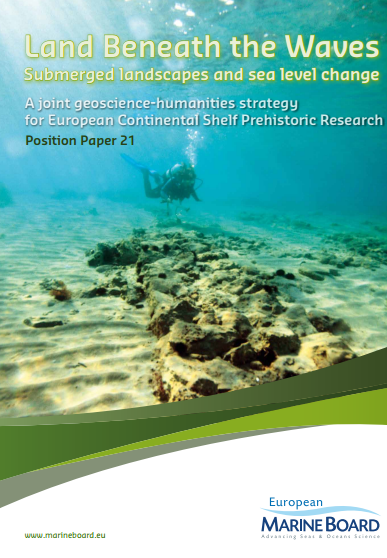Tracing our ancestors at the bottom of the sea
 New European Marine Board report recommends exploration of sea-submerged settlements abandoned by our ancestors.
New European Marine Board report recommends exploration of sea-submerged settlements abandoned by our ancestors.
A specialist group of European researchers are studying the remains of prehistoric human settlements which are now submerged beneath our coastal seas. Some of these drowned sites are tens of thousands of years old. From the progressive discovery and analysis of these prehistoric remains, a new scientific field has emerged, combining the expertise from many disciplines including archaeology, oceanography and the geosciences. The new field is called Continental Shelf Prehistoric Research.
This rapidly evolving research field is the focus of a new European Marine Board (EMB) position paper titled ‘Land Beneath the Waves: Submerged Landscapes and Sea-Level Change.’ The paper describes how during the successive ice ages of the last 1 million years, the sea level dropped at times by up to 120m, and the exposed area of the continental shelf added 40% to the land area of Europe; a terrain occupied by vegetation, fauna, and people. Consequently, many of the remains and artefacts of Europe’s prehistory are now underwater.
The new position paper provides a comprehensive overview of recent progress in the study of our submerged cultural heritage and sets out key research questions and policy priorities needed to support this research in the future. It is an invaluable resource for policy makers, research funders and scientists alike. Professor Jan Mees, Chair of the European Marine Board, explains its importance: “our submerged cultural heritage is not a renewable resource; it is a unique irreplaceable cultural asset which can provide answers to many research questions about our prehistoric ancestors, landscapes and climate.”
Download the paper here: http://www.marineboard.eu/publications
Read the press release.
